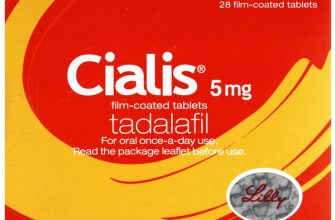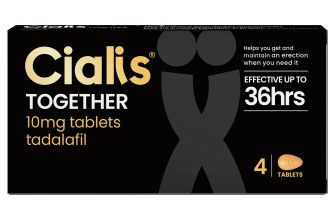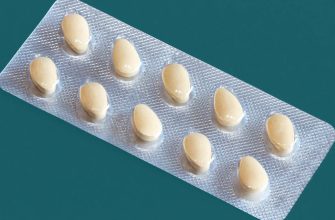Need clearer skin? Consider Retin-A cream. This prescription-strength topical retinoid, containing tretinoin, directly combats acne by increasing cell turnover and unclogging pores. Results vary, but many experience reduced breakouts and improved skin texture within weeks.
Before starting, discuss your skin type and any pre-existing conditions with a dermatologist. They’ll determine the appropriate strength and usage frequency. Common side effects include dryness, redness, and peeling; these usually subside with continued use. Start with a low concentration and gradually increase as tolerated. Consistent application is key – apply a pea-sized amount to clean, dry skin nightly, avoiding the eyes and mouth.
Protect your skin from the sun. Retin-A increases sun sensitivity, so daily sunscreen with at least SPF 30 is mandatory. Avoid excessive sun exposure, and consider wearing a hat and sunglasses for added protection. Furthermore, remember consistent hydration is vital for managing dryness, so incorporate a moisturizer into your routine.
Note: Pregnant or breastfeeding women should consult their physician before using Retin-A. This information is for guidance only and does not substitute professional medical advice. Always follow your dermatologist’s instructions.
- Retin-A Cream Prescription Strength: A Comprehensive Guide
- Understanding Prescription Strengths
- Managing Potential Side Effects
- Treatment Goals & Expectations
- Follow-up Appointments
- Alternative Treatments
- What is Retin-A Cream and How Does it Work?
- Prescription Strength vs. Over-the-Counter Alternatives: Key Differences
- Common Uses of Prescription Strength Retin-A Cream
- Treating Acne
- Reducing Fine Lines and Wrinkles
- Improving Skin Tone and Texture
- Managing Hyperpigmentation
- Potential Side Effects and How to Manage Them
- Managing Irritation
- Other Possible Side Effects
- Applying Retin-A Cream Correctly: A Step-by-Step Guide
- Precautions and Contraindications: Who Shouldn’t Use Retin-A?
- Pregnancy and Breastfeeding
- Sun Sensitivity
- Active Skin Conditions
- Allergic Reactions
- Other Medications
- Specific Skin Types
- Children
- Integrating Retin-A into Your Skincare Routine
- Finding a Dermatologist and Getting a Prescription
Retin-A Cream Prescription Strength: A Comprehensive Guide
Consult your dermatologist to determine the correct Retin-A strength for your skin type and concerns. They’ll tailor a treatment plan that meets your individual needs.
Understanding Prescription Strengths
Retin-A creams are available in various concentrations, typically ranging from 0.025% to 0.1%. Higher concentrations aren’t necessarily better; stronger doesn’t automatically mean more effective. Your doctor will prescribe the most suitable strength based on your skin’s sensitivity and the specific condition being treated.
- 0.025%: Often prescribed for first-time users or those with sensitive skin. Expect gradual results.
- 0.05%: A common strength used for acne treatment and to improve skin texture.
- 0.1%: Typically reserved for more severe acne or significant wrinkles, and used with caution due to potential irritation.
Managing Potential Side Effects
Common side effects include dryness, redness, peeling, and irritation. These are usually temporary and can be minimized.
- Start slowly: Begin with a small amount, applying it every other night. Gradually increase frequency as tolerated.
- Use a moisturizer: Apply a gentle, fragrance-free moisturizer daily, especially after using Retin-A.
- Sun protection: Retin-A increases sun sensitivity. Always use a broad-spectrum sunscreen with an SPF of 30 or higher, daily.
- Listen to your skin: If irritation is severe, reduce application frequency or temporarily discontinue use. Consult your dermatologist if needed.
Treatment Goals & Expectations
Results vary depending on the individual and the condition being treated. Acne treatment may show improvement within a few weeks, while wrinkle reduction takes longer, often several months to see significant changes. Patience and consistency are key.
Follow-up Appointments
Regular check-ups with your dermatologist are important. They’ll monitor your progress, assess skin response and make adjustments to your treatment plan as necessary. This ensures you’re getting the best possible results while minimizing side effects.
Alternative Treatments
Your dermatologist might discuss other topical treatments or combine Retin-A with other therapies for optimal results. Always follow their recommendations.
What is Retin-A Cream and How Does it Work?
Retin-A cream is a topical medication containing tretinoin, a form of vitamin A. It accelerates skin cell turnover.
This increased turnover helps reduce the appearance of wrinkles and fine lines. It also treats acne by preventing clogged pores and reducing inflammation.
Tretinoin works by increasing the production of collagen and elastin, proteins crucial for skin elasticity and firmness. This leads to smoother, more youthful-looking skin.
The cream’s effects aren’t immediate; you’ll likely see gradual improvement over several weeks or months of consistent use. Expect some initial dryness and irritation as your skin adjusts.
Always follow your dermatologist’s instructions regarding application frequency and amount. Using too much won’t accelerate results and can increase irritation. Sun protection is vital during Retin-A use, as sun sensitivity is a common side effect.
Retin-A is a prescription-only medication, so consult your doctor or dermatologist to determine if it’s the right treatment for you and to discuss potential side effects and contraindications.
Prescription Strength vs. Over-the-Counter Alternatives: Key Differences
Choose prescription-strength Retin-A if you need stronger results faster. Over-the-counter options contain lower concentrations of tretinoin, the active ingredient.
- Concentration: Prescription Retin-A creams typically range from 0.025% to 0.1%, while over-the-counter alternatives usually top out at 0.01%. Higher concentrations mean more potent anti-aging and acne-fighting effects.
- Treatment goals: Prescription Retin-A effectively addresses severe acne, wrinkles, and hyperpigmentation. Over-the-counter options are better suited for mild to moderate skin concerns.
- Speed of results: Expect to see more noticeable improvements with prescription-strength Retin-A in a shorter timeframe. Over-the-counter products offer gradual, less dramatic changes.
- Side effects: Higher concentrations increase the likelihood of side effects like redness, dryness, and peeling. Your dermatologist can help mitigate these with advice and recommendations.
- Cost: Prescription Retin-A generally carries a higher price tag due to the higher concentration and the need for a doctor’s visit. Over-the-counter options are typically less expensive.
Consider these factors carefully when deciding which option aligns with your needs and budget. Always consult a dermatologist before starting any new skincare routine, especially if you have sensitive skin or pre-existing skin conditions. They can provide personalized guidance and monitor your progress.
- Assess your skin concerns: Identify the severity of your acne, wrinkles, or hyperpigmentation.
- Discuss options with a dermatologist: They’ll recommend the best product and concentration for your skin type and concerns.
- Follow instructions carefully: Adhere to your dermatologist’s advice regarding application frequency and other skincare steps.
- Be patient: Results take time, even with prescription strength products. Don’t expect overnight miracles.
Common Uses of Prescription Strength Retin-A Cream
Retin-A, containing tretinoin, effectively treats acne by unclogging pores and preventing new breakouts. It increases skin cell turnover, leading to smoother skin.
Treating Acne
Prescription-strength Retin-A offers a powerful solution for various acne types, from mild blackheads and whiteheads to moderate inflammatory acne. Consistent application generally shows improvement within several weeks. Always follow your dermatologist’s instructions for application frequency and amount.
Reducing Fine Lines and Wrinkles
Retin-A stimulates collagen production, improving skin texture and reducing the appearance of fine lines and wrinkles. This effect is most noticeable with long-term use. Regular use contributes to firmer, more youthful-looking skin.
Improving Skin Tone and Texture
By increasing cell turnover, Retin-A helps fade hyperpigmentation (dark spots) from sun damage or acne scars. This leads to a more even skin tone and a visibly smoother texture. Expect gradual improvement over several months of consistent use.
Managing Hyperpigmentation
Sun spots, age spots, and acne scars often respond well to Retin-A’s ability to accelerate cell renewal. This process helps lighten dark spots and create a more uniform complexion. Combine with sun protection for best results.
Potential Side Effects and How to Manage Them
Start with a low concentration and gradually increase it as your skin tolerates. This minimizes irritation.
Expect initial dryness, redness, and peeling. Apply a generous layer of moisturizer, ideally one formulated for sensitive skin, both morning and night. Consider using a fragrance-free, hypoallergenic moisturizer.
Sun sensitivity is common. Always wear a broad-spectrum sunscreen with an SPF of 30 or higher, even on cloudy days. Reapply every two hours, especially after swimming or sweating.
Managing Irritation
If irritation persists, reduce application frequency. Use Retin-A every other night, or even less frequently, until your skin adjusts. A short break may be necessary. Consult your dermatologist if irritation is severe or doesn’t improve.
Other Possible Side Effects
Burning or stinging sensations are also possible. Applying a thin layer and waiting 20-30 minutes before moisturizing can help. If discomfort is significant, talk to your doctor.
Purging (a temporary increase in breakouts) can occur as Retin-A encourages cell turnover. This is usually temporary. Continue using the cream consistently; results improve over time.
Always follow your dermatologist’s instructions. They can provide personalized advice and monitor your progress. Open communication with your doctor is key to successful Retin-A treatment.
Applying Retin-A Cream Correctly: A Step-by-Step Guide
Begin with thoroughly cleansed skin. Use a gentle cleanser and pat your face dry; avoid rubbing.
Wait 20-30 minutes after cleansing before applying Retin-A. This allows your skin to fully dry, preventing irritation.
Use a pea-sized amount of cream for your entire face. More isn’t better; it can increase irritation.
Apply the cream evenly, using your fingertips. Gently dab, don’t rub, the cream onto your skin. Avoid your eyes and lips.
Apply Retin-A only at night. Sunlight can increase your skin’s sensitivity and cause sunburns.
Start with application every other night. Gradually increase frequency as your skin tolerates it, working your way up to nightly use.
Use sunscreen with an SPF of 30 or higher daily. Retin-A increases sun sensitivity; sunscreen is vital for protection.
Be patient. Results take time. You should notice improvement in several weeks, but full results can take months.
If you experience excessive dryness, redness, or peeling, reduce application frequency. Consult your dermatologist if irritation persists.
Store Retin-A in a cool, dark place. Avoid extreme temperatures and direct sunlight to maintain its potency.
Note: This guide provides general advice. Always follow your dermatologist’s specific instructions for using Retin-A.
Precautions and Contraindications: Who Shouldn’t Use Retin-A?
Before starting Retin-A, discuss your health history with your dermatologist. Retin-A isn’t suitable for everyone.
Pregnancy and Breastfeeding
Avoid Retin-A during pregnancy and breastfeeding. The potential risks to the developing fetus or infant outweigh the benefits of using Retin-A.
Sun Sensitivity
Retin-A increases your skin’s sensitivity to sunlight. Always use a broad-spectrum sunscreen with an SPF of 30 or higher daily, even on cloudy days. Limit sun exposure, especially during peak hours. Reapply sunscreen frequently, particularly after swimming or sweating.
Active Skin Conditions
Individuals with eczema, rosacea, or severe acne may experience irritation with Retin-A. Your doctor will assess your suitability. If you have open wounds or active infections on your skin, wait until they heal before starting treatment.
Allergic Reactions
A small percentage of people are allergic to tretinoin (the active ingredient in Retin-A). Conduct a patch test before applying it to a larger area. Stop use and seek medical advice if you experience redness, swelling, itching, or burning.
Other Medications
Some medications may interact with Retin-A. Inform your dermatologist about all medications, supplements, and herbal remedies you’re currently using. This includes over-the-counter drugs.
Specific Skin Types
Individuals with very sensitive or dry skin might find Retin-A too harsh. Your dermatologist might recommend starting with a lower concentration or less frequent application. They can also suggest strategies to minimize irritation, such as using a moisturizer.
Children
Retin-A is generally not recommended for children, unless specifically prescribed by a dermatologist for a particular condition.
Integrating Retin-A into Your Skincare Routine
Begin with a pea-sized amount of Retin-A cream applied every other night. This allows your skin to adjust gradually. Observe your skin’s reaction. If irritation is minimal, you can increase frequency to nightly application after a week or two. Always listen to your skin’s signals.
Apply Retin-A after cleansing and toning, but before moisturizing. Allow it to absorb fully before applying moisturizer. A good moisturizer is crucial for mitigating dryness, a common side effect.
Use a gentle cleanser. Avoid harsh scrubs or ingredients that can further irritate your skin while using Retin-A. Opt for hydrating, non-comedogenic products.
Sunscreen is paramount. Retin-A increases sun sensitivity. Use a broad-spectrum sunscreen with at least SPF 30 daily, even on cloudy days. Apply generously 15-30 minutes before sun exposure.
Expect initial purging. This is a temporary flare-up where existing acne may worsen before improving. This usually lasts a few weeks. Consistency is key; don’t discontinue use prematurely.
| Week | Retin-A Application | Expected Result |
|---|---|---|
| 1-2 | Every other night | Mild dryness, potential purging |
| 3-4 | Nightly (if tolerated) | Reduced breakouts, improved texture |
| 5+ | Nightly | Clearer, smoother skin; continued monitoring for irritation |
If irritation persists or worsens, reduce application frequency or temporarily stop use and consult your dermatologist. They can help adjust your treatment plan.
Finding a Dermatologist and Getting a Prescription
Begin your search for a dermatologist using online directories like the American Academy of Dermatology’s “Find a Dermatologist” tool. Filter by your insurance provider to ensure coverage. Read online reviews, paying close attention to patient experiences with acne treatment.
Schedule a consultation. During this appointment, discuss your skin concerns, past treatments, and medical history. Be prepared to answer questions about allergies and medications. Your dermatologist will perform a skin examination to assess your acne severity and determine the suitability of Retin-A.
If Retin-A is recommended, the dermatologist will write a prescription. They’ll likely provide instructions on proper application and potential side effects. Follow those instructions carefully. Ask questions about any concerns you have regarding the treatment.
Fill your prescription at a pharmacy. Before leaving the pharmacy, confirm the correct dosage and usage instructions. Some pharmacies offer medication counseling, so take advantage of this if offered.
Follow up with your dermatologist for regular check-ups. This allows for monitoring your progress and adjusting the treatment plan if needed. Maintaining open communication with your dermatologist ensures you receive the best possible care.







